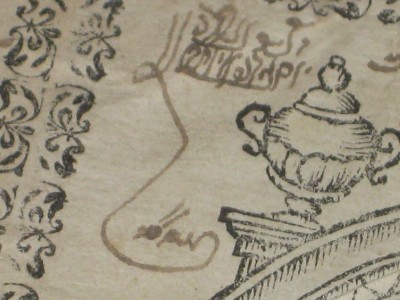Almost Everyone enjoys a nice book signed by the author. It adds a touch of personal flavor and a feeling of closeness that comes with holding a book you know the author once signed. But not always does that mean they have more value or scarce in any way. James Ellroy for example, is known for signing every copy of the 65,000 strong first run of My Dark Places. With Jewish books, there are entire categories of books which come signed more often than that. Take 20th century Yiddish books for example. Yiddish books in the last century were often self-published by the authors and thus were being sold personally with no distributors involved. This period in Yiddish writing is characterized by the need of every self-respecting Yiddish speaker to write a book, whether or not anyone in the world would ever want to read it. Such titles run from auto-biographies and Poetry to short stories and Novels. In general, the authors were left behind with numerous copies which they would eventually give out to old and new friends and at every occasion, usually with an inscription attached. There was also a great interactions between the various Yiddishists, which gave reason to each of them inscribing his books to other Yiddish authors. The result is a great percentage of Yiddish books which are signed and/or inscribed by the authors. This in turn leads to their value being very little over what and unsigned copy would be worth.
One the other hand, some authors almost never signed their books. Take some modern prolific authors for example, Aryeh Kaplan or Gershom Scholem, I have rarely encountered signed copies of their works. On the other hand, some authors seem to have signed every book they can get a hand of, a few examples being, James Grover McDonald in his work My Mission in Israel, H. Sklar and Daniel Persky.
Early printed works are rarely signed as well, it is extremely rare to find an 18th century or earlier book with an author's inscription. The cost of the printing of books until the modern age, was prohibitive enough that they were rarely passed around as gifts. Ladino literature as well I have only rarely seen with an author's inscription.
There are a few general rules to keep in mind to determine if a book being signed is not common. Self-published books are most often signed, the cost of the book for the author being less than otherwise and the fact that many are often left unsold makes Self-published Signed books more common. The older the book, the less chance of the author signing it as well. Scholarly works and works of non-fiction seem to be signed less often than fiction. The more specific the title, the less chance of it being inscribed. For example, the history of the Jews of Salonica in the 18th century will most likely be less prone to have an inscription than a novel for Jewish Youth. Sermons are more likely to be signed as well.
Another thing to keep in mind, is that if the author owned the printing press, he was much more liberal with giving and inscribing books of his. This is evident for example in the works of Rabbi Yeshaya Dayan who had a printing press in Aleppo in the last 19th century, the work that he wrote comes signed more often than not. Eliyahu ben Amozag as well, printed his works in his printed press in Livorno and his inscriptions come around regularly as well.
Regardless of value, signed books are a great addition to any collection and a special touch to any book. This is especially the case with an author you have a special affinity for or an important person. Good Luck Collecting!

No comments:
Post a Comment